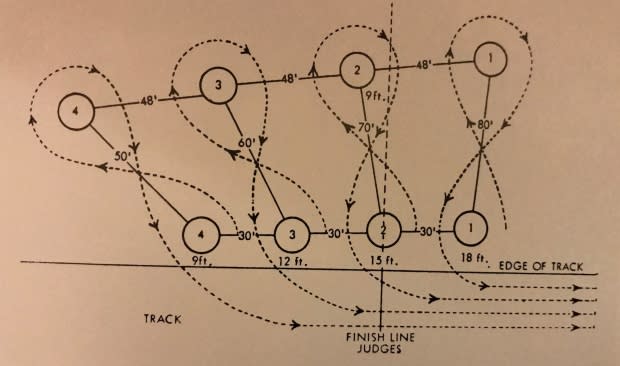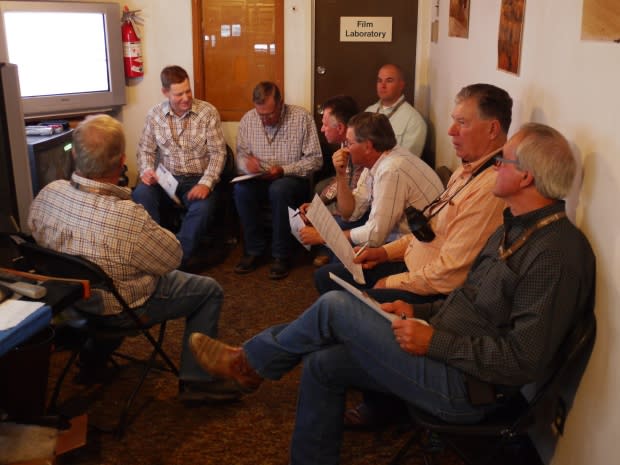Changing the chucks: The Stampede sport is no longer what it was in 1923 — what's next?

Over a century, chuckwagon racing at the Calgary Stampede has evolved from a sport with real stoves to one with microchipped horses. Now, historians question whether the Stampede can further improve the safety of the sport amid renewed calls from animal rights advocates to chuck the chucks.
The sport, in which drivers race around a track in chuckwagons pulled by teams of horses, has undergone countless changes to improve safety for both drivers and horses since its 1923 inception.
Despite updates, horses continue to die in chuckwagon racing at a far greater rate than in any other Stampede competition.
Six deaths took place in the 2019 incarnation of the 10-day event — sparking debate about the future of the competition.
"It's just terribly unfortunate," said Doug Nelson, a former chuckwagon driver, racing judge and the author of Hotcakes to High Stakes: The Chuckwagon Story. "I always felt when I was judging, I was there to protect the horses."

Nelson, of Nanton, Alta., said the sport has come a long way since the "wild and woolly" days when his father, Lloyd Nelson, drove in the Rangeland Derby and won it in 1956. And most of the changes, he said, have targeted horse safety.
Wooden barrels and real stoves
Nearly a century ago, Stampede founder Guy Weadick dreamed up chuckwagon racing as an official event to attract more visitors.
The first chuckwagon drivers had to dodge wooden barrels while completing a figure-eight track, park their authentic ranch wagons and then stoke up a fire in real stoves bolted into their wagons.
The first cowboy to raise smoke was declared the winner.

"It was much more of a ponderous ending to the race, it wasn't quite as dramatic," said Glen Mikkelsen, the Calgary-born author of Checkered Courage: Chuckwagon Racing's Glass Family and Never Holler Whoa!: The Life of a Chuckwagon Racing Driver.
But Mikkelsen said changes to the competition began as early as 1925 — when a wire finish line was brought in and real fires were put out.
The real stoves have since been replaced by rubber tubs because they were a heavy hazard that could tip a wagon or fall out of a wagon and injure outriders.
The barrel obstacles have gone from being made of wood to synthetic plastic so wagons don't flip if they hit them.
All the drivers are aware that the safety factor is the biggest thing now. - Ray Mitsuing, chuckwagon driver of 36 years
Slim wagons race on the track today rather than real ranch wagons, and wagon poles are made of metal instead of wood so they don't fall apart.
Stronger horse harnesses have replaced leather ones that used to snap.
The roster of horses has also changed with many retired thoroughbred racehorses being recruited today, replacing the historic heavy draft horses.
Both Mikkelsen and Nelson agreed the new rules have focused on horse safety.
Major changes were made following an accident involving a trailing stove rack in 1986 — the year when a record of 12 horse deaths were recorded.
Nelson said the rack was redesigned that year and set higher so horses couldn't step into it.

"All the drivers are aware that the safety factor is the biggest thing now," said Ray Mitsuing, a long-time driver who retired from chuckwagon racing after this year's Stampede with 36 years of riding experience under his belt.
The races can't get any safer, said Mitsuing, who holds the record for the most Canadian Professional Chuckwagon Association titles.
Over the past decade, the Stampede said, it has repeatedly consulted animal experts on ways to improve.
In 2010, for what's believed to be the first time in history, the Stampede cancelled a night of chuckwagon racing due to safety concerns, citing heavy rains making the track unsafe.
The following year, the Stampede introduced thorough veterinarian checks of all horses and mandatory rest days, as well as enhanced track maintenance. That year, the Stampede also cut down the number of outriders each team is allowed, from four to two.
More recently, the Stampede took action to reinforce the Rangeland Derby track's inside rail for better footing for the horses and repositioned barrels on the infield to reduce the chance of wagon contact in 2016.

The organization has also started vetting drivers' safety records and sportsmanship and requiring horses to have microchips so they can track their race history.
In a statement, the Stampede said the organization's changes in 2019 include pre-race scanning of all competing horses, allowing outsiders to help other teams without penalty and partnering with the University of Calgary to study ammonia levels in horses as potential measures of athletic performance.
"Treating animals with respect and care is part of how we celebrate our western heritage and values," the organization said.
It added the Stampede believes in continued evolution and improvement when it comes to animal care.
Changes on all fronts
The Stampede has evolved dramatically over the past century — on all fronts.
"It's not the Wild West anymore," said Jeff Robson, general manager of the Canadian Professional Rodeo Association.
Robson said all rodeo events across the country have changed to better care for the animals. Like hockey players, he said, organizers track statistics on animals' races and injury rates.
Robson added prize money for events has also increased.

The Stampede said it has invested in new equipment, technology and handling methods. Animal drug testing methods have increased on the grounds as well.
Today, women can both attend and compete in Stampede events, which wasn't always the case.
Stampede judges have also recently been given more power to call reruns and no-times if an animal seems to have been hurt, during tie-down roping and steer wrestling competitions.
After the 2018 event, the site's location for Indigenous programming and artisans was renamed Elbow River Camp because the historic Indian Village title was deemed unacceptable by some attendees.
Resistance to change
It is still unclear what exact changes, if any, the Stampede will make on the grounds next year.
Following the 2019 event, the Stampede told CBC it is "committed to initiating a thorough review process" around chuckwagon safety, though the organization said it did not yet know what that review would look like.
The video below shows the chuckwagon race crash on July 12, 2019, which led to one horse having to be put down. Graphic warning: This video may be disturbing to some viewers.
However, the sport's enthusiasts are optimistic the staple chuckwagon event won't cease to exist.
Nelson said he's hopeful for the sake of the horses.
"What options would they have — other than a dog food can?" the retired judge said.
Aritha van Herk, an English professor at the University of Calgary who writes about chuckwagons, said the Stampede event's complex cultural and historical ties make conversations about its end so divisive.

"It's less a desire to master [animals] than to merge with them," she added, noting such sports have taken place throughout history, dating back to Roman chariot racing.
A U of C colleague and professor emerita of Canadian Studies, Tamara Seiler, agrees history plays a massive role in keeping the event alive, as so financial investments into agriculture and ranching industries tied to the Stampede.
"Some would argue … at a mythological level, this chuckwagon race embodies the kind of [Canadian] communal approach to the west," Seiler said.
Canadian chuckwagon riders work together with their horses to race, while the stereotype surrounding an American cowboy is an individual against nature, she said.

Some Canadians, like Mikkelsen, the Calgary-born chuckwagon historian who now lives in Prince George, B.C., believe chuckwagon racing is Canada's only real professional sport.
"If you look at lacrosse, hockey, for example, those sports have been taken up by people around the world. But chuckwagon racing is solely Canadian," he said.
Although animal rights advocates want the races to cease, Seiler said she doubts the Stampede will ever get rid of animals. Instead, the cultural historian thinks the Stampede will go back to the drawing board and make changes to update race safety again.
That tension between what we might call urban values and if you can call them rural values, was built into the Stampede right from the beginning. - Tamara Seiler, professor emerita of Canadian Studies at the University of Calgary
The debate is somewhat ironic, she said, considering how the Stampede formed to become what it is today.
"That tension between what we might call urban values and if you can call them rural values, was built into the Stampede right from the beginning," Seiler said.
"The Calgary Stampede combined with the [Calgary Industrial] Exhibition … and the exhibition was always about progress.… One is about progress, the other is about nostalgia for a past, something that's gone, changing."


